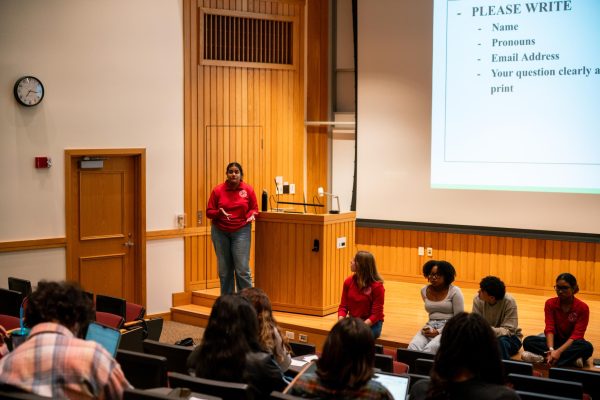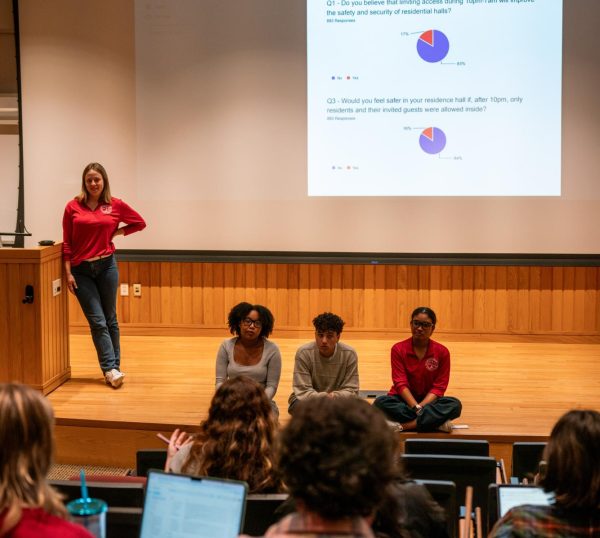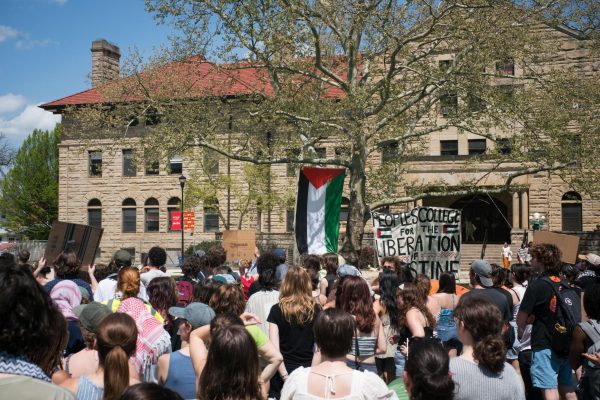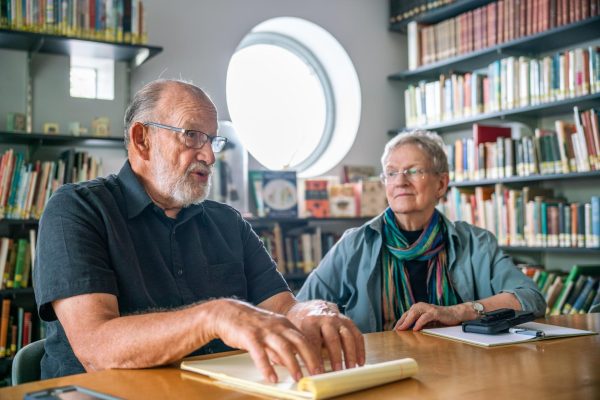Salary Freeze Incites Faculty Concern
Editor’s Note: The letter referenced in this article has been published in full under “Letters to the Editors” in this issue’s Opinions section.
As the Board of Trustees convenes this weekend, freezes to non-union salaries remain a key concern among faculty and staff. The freezes were instituted last year and maintained as a result of a $5 million immediate budget deficit and long-term structural deficit disclosed to faculty and staff June 14.
After the announcement of the freezes, James Monroe Professor of Politics Chris Howell and Nathan A. Greenberg Professor of Classics Kirk Ormand wrote a letter July 17 — obtained by the Review this week — in response to Chair of the Board of Trustees Chris Canavan, OC ’84, expressing their discontent with the board’s continued abandonment of a five-year plan to increase the median salaries of the College’s faculty to that of its peer group.
As President Carmen Ambar has asserted, the shortfall — largely attributed to a substantial drop in enrollment — leaves the future of the institution contingent on “difficult” financial choices to be made in the coming months. Dean of the College of Arts and Sciences Tim Elgren says that the salary freeze saved $1.2 million last year. According to Interim Director for Finance and Administration Alan Norton, it is likely that the freeze will continue into the 2018–2019 academic year.
To Howell, this freeze is just the latest manifestation of a concerning pattern.
“This is the default response to every financial crisis,” Howell said. “Every time you get a crisis, some administrator will say, ‘We need to deal with this in a strategic fashion.’ That’s the usual tip-off that it will not be dealt with in a strategic fashion.”
Howell refers to two such incidents: one in 2004, and another during the 2007–2008 global financial crisis. The first, he said, resulted in a brief freeze, after which faculty raises were fully reinstated. The second, however, was more substantial, constituting a one-year freeze followed by a 1 percent salary increase the following year. According to Howell, the endowment lost around one-third of its value during that period — and the College made deep cuts over the next few years.
Yet after that period, the College projected an air of financial ease, appearing set for recovery. According to Howell, the following years were consequently populated by a series of building projects that took liberally from the endowment — the consequences of which, he said, now fall on faculty and staff.
Howell and Ormand have been closely involved in efforts to remedy the College’s decreasing median salary relative to its peer institutions. Howell, for his part, was a member of the 2013 Joint Advisory Group on Faculty Compensation and Support. Purpose-built to address the seeming inadequacy of faculty payment, the coalition of faculty, trustees, and administrators conducted extensive research on Oberlin’s peer institutions among the “Sweet 16” group, a body of 16 liberal arts colleges comparable to Oberlin in both mission and academic standing.
The investigation conclusively found that Oberlin’s faculty were underpaid in comparison to faculty at peer institutions.
“We do the same job, teaching the same kinds of students the same kind of sources, the same level of quality of scholarship and teaching as our peers in these other institutions, and yet we were paid substantially less,” Howell said of the study’s findings.
The coalition recommended a solution to the board, which led to its June 2013 decision to implement a five-year plan wherein faculty salaries see a 4-percent incremental increase per year, supplemented by a yearly $400,000 pool meant to close the gap. The plan was not implemented into the budget until December 2013; thus, it took effect at the start of the 2014–2015 academic year. To Ormand and Howell, the process was an exemplary model of cooperative governance.
As the General Faculty Council representative on the 2014 Budget and Finance Committee, Ormand was present at the meeting during which the resolution was passed.
“One of the members of the board turned to me after I had passed it and said, ‘Is this going to make the faculty happy?’” Ormand said. “I responded [that] I thought, accurately, that the board had just passed exactly the sort of resolution that the faculty were looking for. But I also said that if the next time there was a financial crisis, the board immediately reneged on that commitment, we would be upset. Here we are.”
Members of the administration, however, characterize the choice as a necessary function of keeping the College afloat. Ambar has repeatedly emphasized the importance of planning for the long haul.
“[The salary freeze], I think, was about what we needed to do this year,” Ambar said. “Certainly, I don’t want to be in a world where we are not able to give raises. That’s not the plan. But trying to respond to what I think is a really complicated environment is really difficult. And so my understanding of the board’s decision was about, ‘How do we ensure that we’re here for the long term?’ That’s complicated, and we certainly want to try to find … consistent ways to give raises.”
As Oberlin’s median salary is gradually outranked by that of its peers, questions might be raised regarding Oberlin’s ability to hire new faculty members when other institutions provide higher-paying offers. Elgren, who must make such a case to incoming faculty, is unconcerned, pointing out that the college hired 16 tenure-track faculty last year alone.
“Remarkably, 14 of the 16 hired were the top pick in the search and many had other competing offers,” Elgren wrote in an email to the Review. “One thing that we hear over and over is that candidates are thrilled by the prospect of teaching such smart and engaged students and to be part of an institution that has this level of commitment to and history of excellence and … diversity and social justice.”
According to Ambar, no decision has been made regarding whether the salary freeze will be reinstated next year.





